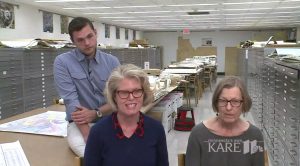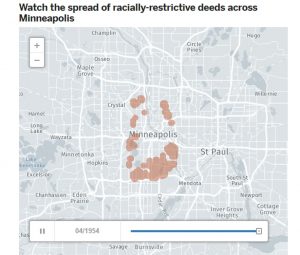
In a conversation with KARE 11 Reporter Adrienne Broaddus, Kirsten Delegard, Augsburg University scholar-in-residence and director of the Mapping Prejudice project, discussed the lasting impact of historically discriminatory housing policies in Minneapolis.
“People think that because we didn’t have segregated water fountains or waiting rooms that we didn’t have segregation in Minneapolis,” she said, “but racial covenants determined who could live where … We are still living with the legacy of these policies. We can point to all kinds of disparities especially in area of home ownership that we are living with today because of these polices enforced over the last century.”
The Mapping Prejudice project, once complete, will be the first comprehensive map of racial covenants for a U.S. city. Watch the KARE 11 report about the project.


